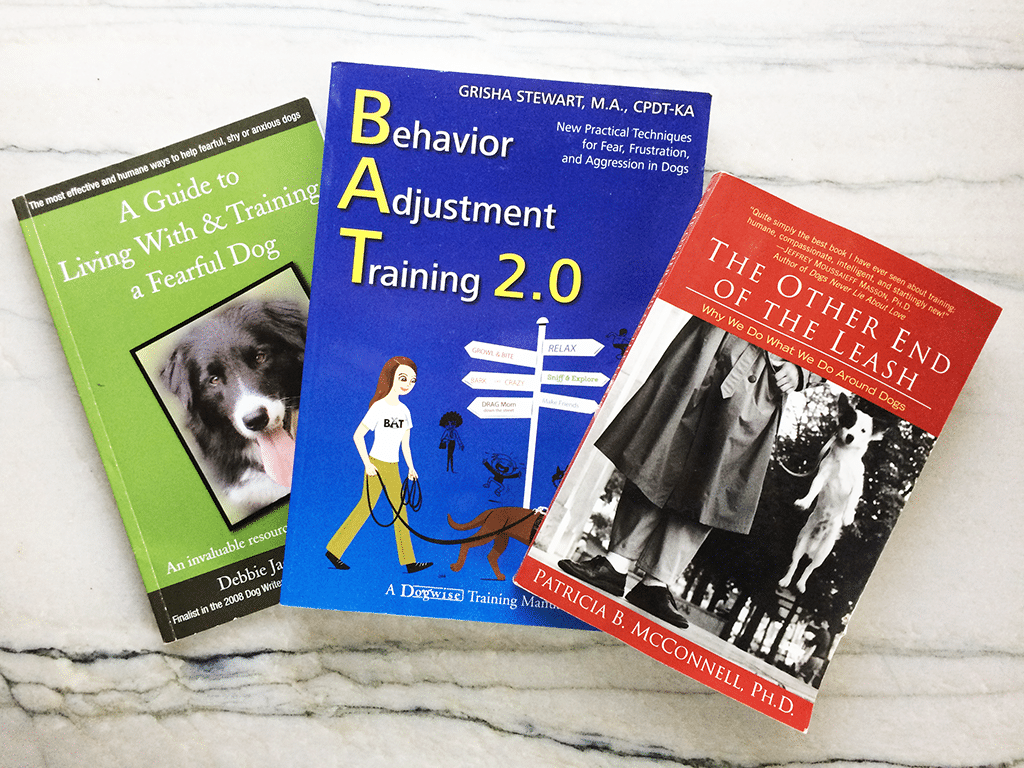BAT, Behavior Adjustment Training, behavior modification, Counter-conditioning, Desensitization, Dog Aggression, dog anxiety, dog fears
Behavior Adjustment Training (BAT)
Behavior Adjustment Training (BAT)
By Will Bangura, M.S., CBCC-KA, CPDT-KA, (Dog Behaviorist), Certified Dog Behavior Consultant.
Behavior Adjustment Training (BAT) is a dog behavior modification method developed by Grisha Stewart, a professional dog behaviorist, dog trainer and behavior consultant. BAT primarily aims to help dogs overcome their fears, anxieties, and aggressive behaviors through positive reinforcement and counter-conditioning techniques. The method is based on inter-dog communication and the use of “threat-stimuli,” which are triggers that cause the dog to react aggressively. BAT focuses on teaching the dog to associate these triggers with positive experiences rather than fear and anxiety.
History and Development of Behavior Adjustment Training (BAT).
The development of BAT can be traced back to Grisha Stewart’s work with fearful and aggressive dogs. She observed that many traditional training methods, such as punishment or dominance techniques, often worsen the problem behavior. As an alternative, she developed the BAT method, which uses positive reinforcement and counter-conditioning techniques to help dogs overcome their fears and anxieties. The method was first introduced in 2008 and has since gained popularity among dog trainers and behaviorists.
Behavior Adjustment Training (BAT) Implementation.
The implementation of BAT requires a gradual and systematic approach. The first step is identifying the trigger that causes the dog to react aggressively. The trigger may be a person, animal, object, or situation. The next step is to create a positive association between the trigger and a desirable reinforcement, such as food or play. This is done by gradually exposing the dog to the trigger from a distance and rewarding the dog for calm behavior. The distance between the dog and the trigger gradually decreases over time until the dog can remain calm and close to the trigger.
Examples of Behavior Adjustment Training (BAT) for reactive dogs, aggressive dogs, and dogs with fears.
Barking and lunging at other dogs (Reactivity).
In this case, the trigger is another dog. The dog is exposed to other dogs from a distance and rewarded for calm behavior. The distance between the dog and other dogs is gradually decreased over time.
Aggression towards people.
In this case, a trigger is a person. The dog is exposed to people from a distance and rewarded for calm behavior. The distance between the dog and the people is gradually decreased over time.
Fear of objects.
In this case, a trigger is an object, such as a vacuum cleaner. The dog is exposed to the object from a distance and rewarded for calm behavior. The distance between the dog and the object is gradually decreased over time.
Critics of BAT
Some critics of BAT argue that the method is too time-consuming and requires a high level of commitment from the owner. They also argue that the method may not be effective for all dogs and that some dogs may need more intensive intervention, such as medication or behavior modification.
Advantages and Disadvantages of Behavior Adjustment Training (BAT)
Advantages of BAT include:
- The use of positive reinforcement and counter-conditioning techniques, which are humane and non-violent.
- The gradual and systematic approach helps minimize the dog’s stress and anxiety.
- The focus is on inter-dog communication and “threat stimuli,” which helps address the root cause of the aggressive behavior.
Disadvantages of BAT include:
- The time and commitment required from the owner.
- The method may not be effective for all dogs and may require additional intervention, such as medication or behavior modification.
In conclusion, Behavior Adjustment Training (BAT) is a positive reinforcement and counter-conditioning method that is designed to help dogs overcome their fears, anxieties, and aggressive behaviors. The method has gained popularity among dog trainers and behaviorists and has been successful in many cases. Behavior Adjustment Training (BAT) is a powerful tool for addressing aggressive behavior in dogs. However, it is important to use the method under the guidance of a professional and in conjunction with other behavior modification techniques if necessary. By utilizing BAT, owners can help their dogs overcome their fears and anxieties and improve their quality of life.
It is important to remember that BAT may not be effective for all dogs and that a combination of methods may be necessary to achieve the best results. Additionally, it is crucial to work with a qualified and experienced dog behaviorist or training professional who can assess the dog’s behavior and tailor a behavior modification plan to meet their individual needs.
References
- Stewart, G. (2014). BAT 2.0: Behavior Adjustment Training. Dogwise Publishing.
- Dunbar, I. (2017). Culture Clash: A Revised Edition of the Classic Book on Dog Behavior. James & Kenneth Publishers.
- Corey, L. (2017). Understanding Dogs: An Introduction to Canine Behavior. Central Recovery Press.
- American Veterinary Society of Animal Behavior (AVSAB). (2016). Position Statement on the Use of Punishment for Behavior Modification in Animals. Journal of Veterinary Behavior, 13, 173-180.
- American Society for the Prevention of Cruelty to Animals (ASPCA). (2020). Understanding Aggression in Dogs. ASPCA.


